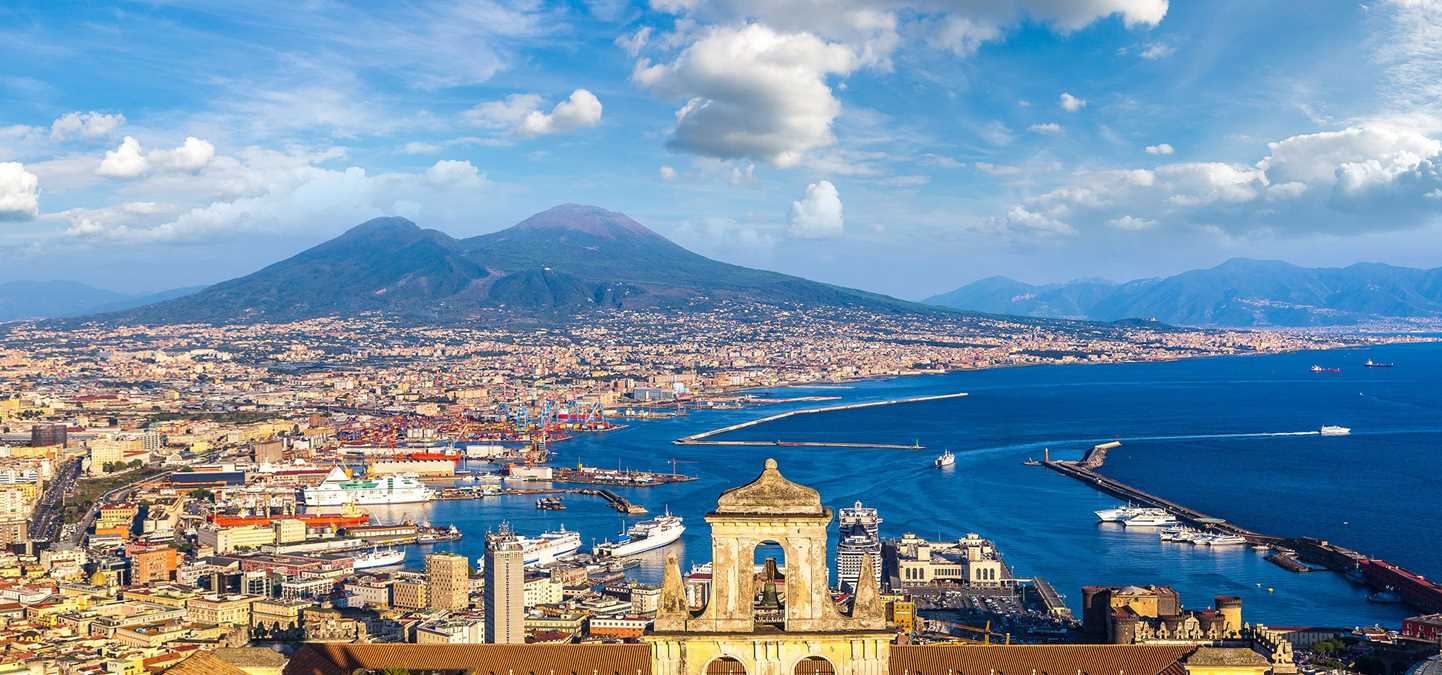Naples and Pompeii Post-Voyage Extension

Day 1 - Naples / Disembark Ship
After disembarking this morning, drive to the district of Vomero on a hill overlooking all of Naples and the sea, with Vesuvius in the background. Here we visit the Certosa and Museum of San Marino, set in a former monastery. The artwork (much of it from the 1600s), the statuary, the marble inlays, and the architecture are remarkable. After lunch, explore the Centro Storico, the historic center of Naples planned originally by the Romans as the great city of Neapolis. It retains its vibrancy today, with lively streets, great architecture, and the buoyant personalities of its residents. We visit the great cathedral—the Duomo—built originally in the 14th century and modified over the years, which contains great art, some of which dates from as early as the 3th century. Continue to the remarkable Basilica of Santa Chiara, beautifully rebuilt after World War II, with extraordinarily colorful tilework in the cloisters that vividly depict 18th century life. Check in at Grand Hotel Vesuvio this afternoon before a Neapolitan-style dinner in a fine restaurant near our hotel. (L,D)
Day 2 - Pompeii / Naples
“Darkness fell, not the dark of a moonless or cloudy night, but as if the lamp had been put out in a dark room,” wrote Pliny the Younger. The story of Pompeii is well known: when Vesuvius erupted on August 24 in 79 A.D., this thriving, elegant, wealthy Roman city was buried in pumice and ash. Some 2,000 citizens perished, and Pompeii would not be rediscovered for some 1,500 years. Today, the buildings and other structures are in a remarkable state of preservation, allowing us to visualize with precision what life was like for the inhabitants. Exquisite wall paintings and some ancient graffiti tell us their preoccupations. Walking the 2,000-year-old streets, explore some of Pompeii’s villas, the forum, the splendid amphitheater (which seated 12,000), along with its temples.
Enjoy lunch before exploring Herculaneum, which suffered from two major volcanic eruptions: first in 63 A.D. and then again in 79 A.D., the latter of which also destroyed Pompeii. However, unlike Pompeii which was buried by volcanic ash, Herculaneum was buried by mud which helped preserve the buildings and some of the opulent homes. Return to Naples for the rest of the day and dinner at leisure.(B,L)
Day 3 - Naples
After breakfast, visit the renowned National Archeological Museum of Naples, a repository of some of the greatest sculptures, bronzes, ceramics, paintings, mosaics, and Roman jewelry or ancient times—much of it unique. It has been enriched over the years by finds from Herculaneum, Pompeii, and other excavation sites, with treasures including the Farnese marbles. Look among other things for the sculptures of Hercules and Venus—and for the Farnese Bull, thought to be the largest preserved sculpture of antiquity. The rest of the day is free time to explore the city of Naples at your leisure. (B)
Day 4 - Naples
After breakfast this morning, check out of the hotel. (B)
Costs & What's Included
Occupancy
Double Occupancy
Single Occupancy
